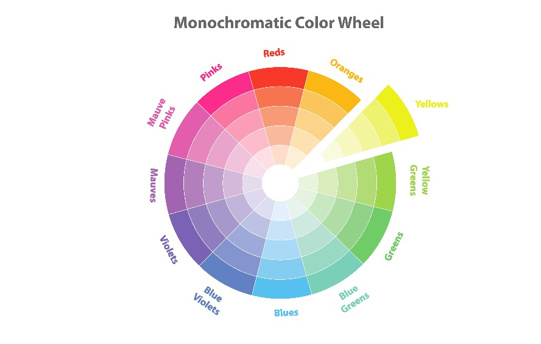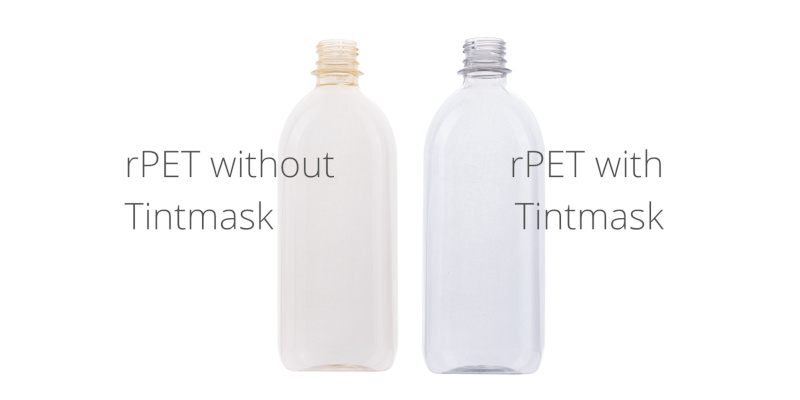Mechanically recycled clear rPET
Issues facing the rPET market
Everyone in the industry knows there are complex issues with regards to the availability, affordability and consistency of high quality clear rPET. There are so many factors that play into this that Holland Colours wanted to showcase the different aspects to better understand this problem. Holland Colours interviewed several brand owners, recyclers and other players in the market to get their perspective.
While virgin PET is clear, recycled PET comes in a variety of colour shades and corresponding prices. These colour differences are caused by remainders from their previous life influencing the value of the recycled material. The clearer the recycled plastic is, the higher the value and the higher the price – to the point where high quality rPET is often more expensive than virgin PET. The result is that it can make more sense for processors and brand owners to use higher levels of virgin PET simply to remain cost competitive.
Costs
The reality is that high quality clear rPET is expensive. To fully understand why this is, it’s important to understand some of the underlying mechanics driving up the price.
New regulations
There are new European regulatory requirements that mandate that as of 2025, PET bottles must contain on average 25% rPET. This means that in the European Union, these new requirements are creating a massive demand for high quality rPET in order for brands to be able to continue to sell in this region. In the Americas similar drivers are arising.
Overview of some of the regulations:
The EU has mandated the industry to include 25% recycled content in PET bottles by 2025 and 30% in all plastics bottles by 2030 under the Single-Use Plastics (SUP) Directive.
Likewise, in the US state of California, manufacturers are required to include an annual average of 15% PCR in beverage containers starting in 2022. By 2025, the mandate is set to increase to 25% and by 2030 to 50%.
Washington state has also recently announced a schedule for post-consumer recycled (PCR) requirements for different product categories, starting with beverage containers and trash bags in 2023, adding certain household cleaning and personal care products in 2025, and expanding to dairy milk containers in 2028. (PackForward-Laws and regulations https://packforward.eu/theme/policy-and-strategy/laws-and-regulations)
Commitments of global brand owners
Holland Colours sees a large push from brand owners who are moving in the direction of rPET independently and setting even higher targets for themselves than the 25% rPET content. So beyond the initial demand, these goals for even higher percentages of rPET are driving up demand even further. It is up to the market to develop suitable solutions the address this increasing demand and avoid transitions to alternative, less desirable packaging materials.
Varying quality rPET
The quality of mechanically recycled rPET can vary greatly. The quality is influenced and impacted by several different factors like the effectiveness of sorting and contamination. This means that there is a high demand and poor availability of high quality, clear rPET, the cost of rPET is sky-rocketing.
Costs: conclusion
These factors all contribute to a massive demand for high quality rPET. The industry is putting a lot of efforts on making more high quality rPET available through better collection, separation, sorting, washing and reprocessing. Holland Colours witnesses a shift in terms of food contact rPET purchase strategy. Brand owners have actively sought out ways to secure a steady supply of rPET that meets their standards by investing in and widening the Deposit Return Schemes and reprocessing facilities. This ensures a steady flow of rPET which can be collected and processed according to their standards. More recently integration, consolidation and expansion of recycling capacity in the value chain has become the standard. But high quality rPET is still scarce. In order to hit the 25% rPET mark for PET bottles, concessions in quality of mechanically recycled rPET most likely have to be made. Now obviously there can be no concession in food contact safety, but there are other alternatives to ensure a steady supply of high quality rPET.
But what factors diminish the quality of rPET in the first place? The major hurdles of high quality rPET
One of the biggest hurdles when it comes to the visual quality of rPET has to do with its consistency. But what factors play a role in the lack of visual consistency of rPET? One of the biggest hurdles is the discolouration: after recycling, most of the time rPET experiences yellowing or other slight discolourations. Undesirable discolouration of rPET during reprocessing is predominantly caused by remaining trace amounts of components like functional additives, colourants, adhesives, inks and other plastics from caps, labels and sleeves. Multiple heat cycles combined with residual component traces result in a higher level of discolouration. Hence it is key to ensure adequate washing and decontamination of the input material before reprocessing.
These are by themselves in many cases harmless and do not affect food contact safety but are undesirable due to their negative effect on colour. This aesthetic deviation has proven to be unattractive for end-consumers. This is quite understandable: drinking milk from a somewhat ‘yellowish’ transparent bottle feels strange for consumers who equate this colour with a lack of hygiene and find it unattractive.
During Holland Colours interviews both the converters and brand owners seem to agree that a yellowish off-colour is not accepted by the average consumer because it is associated with spoilt product. Other aspects related to rPET quality are Intrinsic Viscosity (IV), absence of black spots and haze.
Different solutions to retain rPET value
It is a given that high quality, transparent rPET is scarce and prohibitively expensive to come by. There are several options being worked on to address the problem of limited availability of high quality rPET. Most of these are clearly described in the Design for Recycling Guidelines by the various recycling platforms and associations.
A solution that has already been implemented on a wide scale is to use completely clear packaging. Eliminating colour in packaging will ensure that the value is retained. Reason being that packaging materials are predominantly separated in two recycling streams, i.e. clear and coloured. Mixing and reprocessing various colours, even transparent versions, results in a lower quality output. As stated before the discolouration of clear rPET is due to multiple heat cycles in combination with residual component traces.
Another solution has been to use closed loops in the recycling process. For example, large brand owners own a stake in deposit return systems for PET bottles. This helps to ensure the quality of the PET bottles being collected and it allows them to standardise a significant portion of the PET collected for the recycling. This can help in some ways, but inevitably, after multiple heat cycles the same undesirable discolouration issues might arise.
A technical solution to the undesirable yellowish discolouration is colour neutralisation. Using opposite colourants allows for a wider colour range of rPET to be used, which of course means that while the total amount of rPET stays the same, more of the available rPET can now be utilised.
How does colour neutralisation work? What are the different product forms and what are their pros and cons?
An undesirable colour cast can be neutralised by means of adding an opposite colourant in the melt processing step, among others the extrusion and injection moulding process. The melt processing step could take place at a recycling facility but also at a (packaging) converter. By addition of the right amount of opposite colourant the rPET will be as close to virgin PET as possible from a colouristic point of view. However, depending on the starting value of the input material, the L-value will always be affected.
Monochromatic colour wheel

The different forms
These concentrates are available in various product forms, depending on the type of carrier used, liquid or solid. A liquid concentrate allows for a low dosing rate also called let down rate (LDR). It’s easy to control and dispersed effectively in the target plastic. However it might have some stability issues with functional colourants or additives settling out. Furthermore some housekeeping challenges might occur when spilled.
A solid concentrate or masterbatch might be based on a wax or polymer and allows for cleaner and easier handling and depending on the type of carrier material either disperses very easily or requires somewhat more melt mixing shear. The colourant, carrier material and LDR of a formulation can be tailored to specific needs. Seeing as there is a trend towards 100% rPET, a wax based solid masterbatch might be preferred. From a sustainability perspective, a non-petroleum, non-food source based wax based solid masterbatch is an option which helps in the goal towards 100% rPET.
Also regulatory requirements in relation to the end-use have to be considered in the composition of the concentrate or masterbatch. The optimal specific product form depends on several factors like the needs and production setup.

